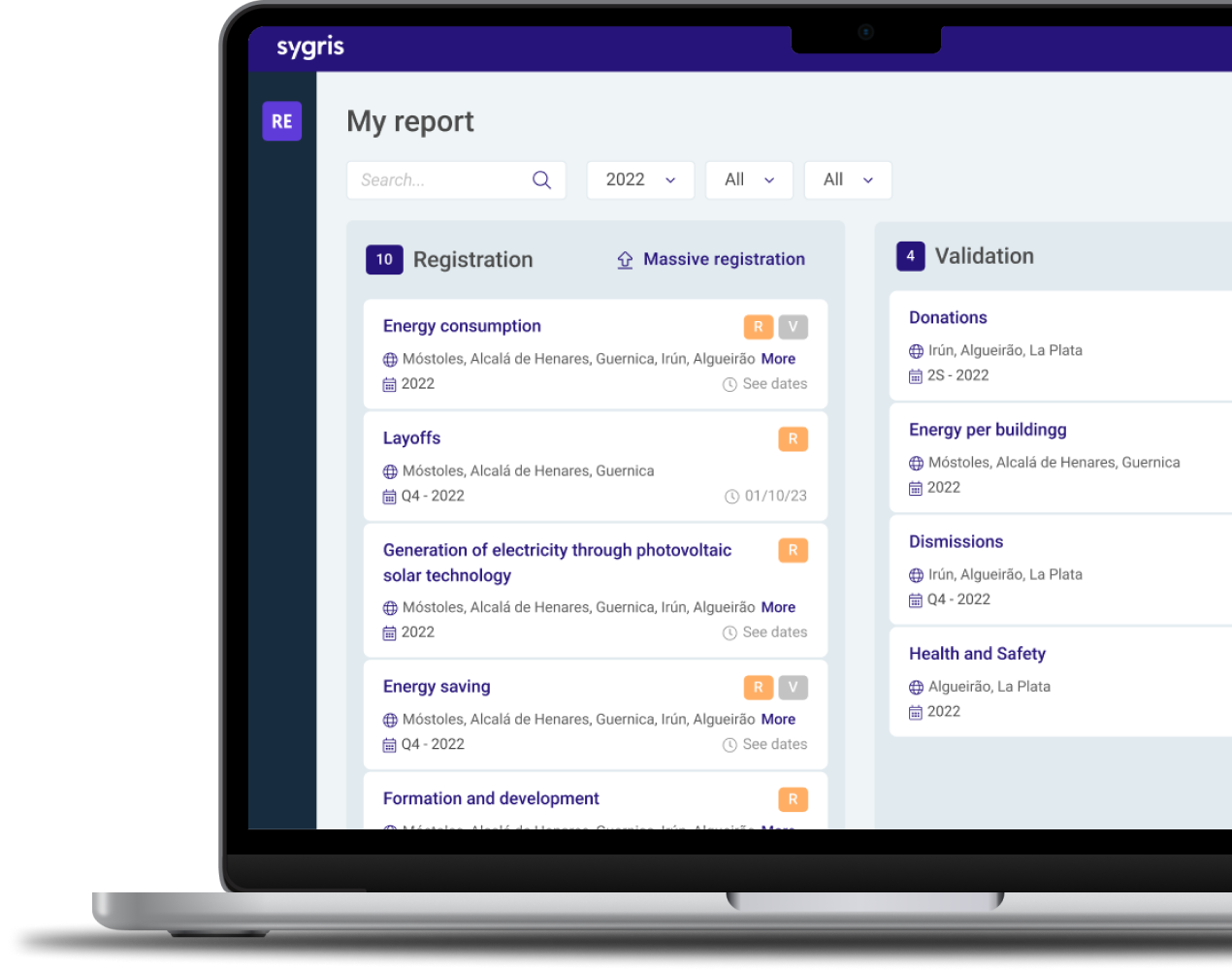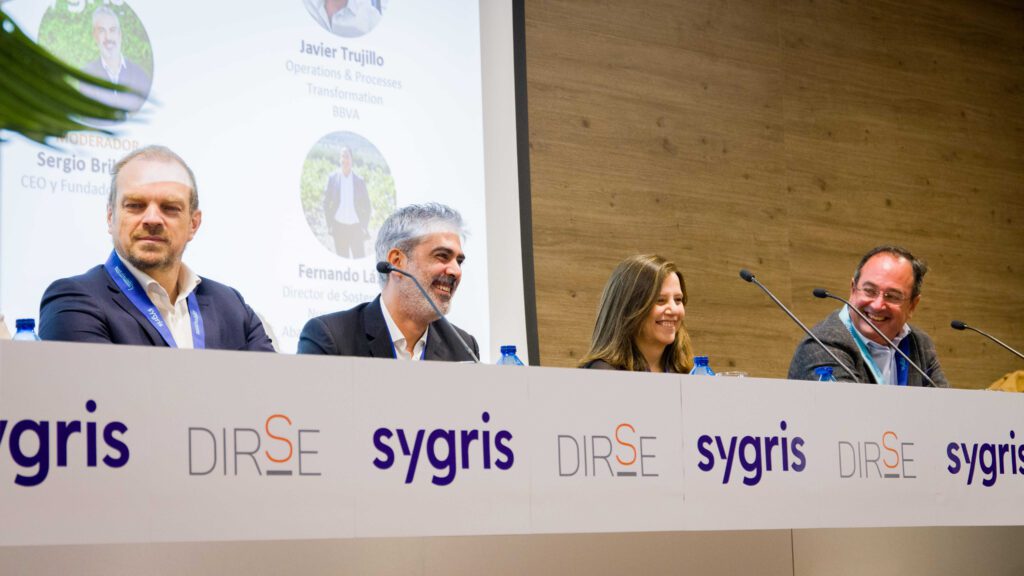The emergence of the Omnibus project brings with it a transformation of regulations that, until recently, seemed clear, challenging us to rethink how to approach ESG reporting and verification. Before defining the next steps, it is essential to understand the path that has brought us to this point and the real meaning of this package. At Sygris, we provide you with a concise and expert analysis to turn uncertainty into an opportunity for innovation and growth.
ESG regulatory developments
The European Union’s (EU) regulatory evolution on sustainability has been the main driver and catalyst for environmental, social, and governance (ESG) matters.
If we were to go back in time, we would find ourselves in December 2019, when the European Commission published the European Green Deal, the EU’s new strategy based on a modern, resource-efficient economy with a commitment to becoming carbon-neutral by 2050.
As part of this strategy, the EU committed to reviewing the provisions on non-financial disclosure in Directive 2013/34/EU of the European Parliament and the Council. Consequently, Directive 2014/95/EU of the European Parliament and the Council of 22 October 2014, known as the Non-Financial Reporting Directive (NFRD), was approved, amending Directive 2013/34/EU. The NFRD led to the enactment of Spain’s Law 11/2018 on non-financial and diversity information.
Over time, the EU intensified its efforts, particularly focusing on standardising sustainability reporting and verification, leading to the approval of Directive 2022/2464, known as the Corporate Sustainability Reporting Directive (CSRD). This expanded the scope of reporting obligations to new companies and required the inclusion of value chain information…
Current regulatory landscape in Europe and Spain
Sustainability regulations in Europe are in a state of rapid transformation, reflecting the EU’s ambition to lead the transition towards a more sustainable and responsible economy. Currently, the CSRD has been transposed into national legislation in 19 out of the 27 EU member states.
In Spain, a draft law—the Business Sustainability Reporting Act (LIES)—has been published in the Official Gazette of the Spanish Parliament and is currently under the amendment phase, with political parties submitting proposals before its final approval.
Amidst this regulatory “limbo,” and given that the CSRD came into force on 1 January 2024, requiring companies to report under this framework, the Spanish securities regulator (CNMV) and the Spanish Institute of Accounting and Auditing (ICAC) issued a joint statement allowing listed companies to submit a hybrid report that incorporates both the ESRS reporting requirements and the obligations of Law 11/2018.
What now?
The Omnibus project emerges as a response to growing regulatory saturation, which in recent years has left businesses and regulators grappling with an excessively complex and fragmented legal framework. This package aims to simplify and streamline sustainability regulations while reducing the administrative burden on European companies. It has become the focal point of discussions at both the European and national levels, sparking intense debates among governments, sustainability officers, auditors, financial directors, senior executives, companies, sectoral organisations, and NGOs, among others.
The Omnibus project was conceived within this context of regulatory convergence and tension. Its primary goal is to simplify the existing legislative framework by eliminating redundancies and integrating various regulatory elements. The aim is to reduce the administrative burden by around 25%, an ambitious target that, if achieved, would enable companies to focus on implementing sustainability strategies rather than being overwhelmed by excessive bureaucracy. This initiative is part of the EU’s Prosperity and Competitiveness Plan, which seeks to balance regulatory rigour with the need to maintain competitiveness and foster innovation in the business sector.
Key changes under the omnibus package
Among the regulations affected by the Omnibus project, the CSRD plays a central role. The Omnibus proposes not only to extend reporting deadlines, postponing obligations by two years for “wave 2” companies that close their financial year on 31 December 2025, but also to revise the thresholds that determine which companies must comply with the new requirements.
Traditionally, a company was considered large if it had more than 250 employees and exceeded either €40 million in turnover or €20 million in assets for two consecutive years. However, in response to the CSRD’s expanded scope and to avoid overburdening businesses, the Omnibus suggests raising this threshold to companies with more than 1,000 employees. This would dramatically reduce the number of companies required to report—from approximately 50,000 to fewer than 7,000 in some cases.
Another key area impacted by the Omnibus package is taxonomy regulation. The EU Taxonomy Regulation, known for its extensive and complex framework, spanning hundreds of pages and multiple delegated acts, has created uncertainty among companies, which must classify their activities as “green” or “non-green.” The Omnibus aims to simplify this regime by establishing clearer criteria and limiting its applicability to companies deemed essential to the green transition due to their size and market influence. The proposal suggests that taxonomy reporting obligations should apply only to companies with more than 1,000 employees and a turnover exceeding €450 million, allowing other businesses to report voluntarily or according to sector-specific criteria.
The Omnibus package also has a significant impact on due diligence requirements. The Corporate Sustainability Due Diligence Directive (CS3D) obliges companies to assess risks in their supply chains, particularly concerning human rights and environmental issues. However, the directive has been criticised for its broad and rigid requirements. Under the Omnibus framework, a more refined approach is proposed, limiting the obligation to assess risks to direct operations and first-tier suppliers, rather than requiring an evaluation of the entire value chain. Additionally, the monitoring cycle would shift from annual assessments to once every five years, significantly reducing the operational burden on companies without compromising transparency and accountability.
Sustainability verification and compliance
Sustainability verification is another crucial element of the Omnibus project. Traditionally, verification has been conducted at two levels, limited and reasonable assurance. The former has been the prevailing approach in countries such as Spain, Italy, and France. The Omnibus proposes maintaining only the limited assurance level, rather than implementing the reasonable assurance level prescribed by the CSRD. While this might appear to reduce regulatory stringency, it aligns with the goal of standardising and harmonising verification methods across the EU, thereby avoiding inconsistencies that could undermine investor confidence.
Political and strategic implications
The Omnibus package also carries political and strategic dimensions. Spain, which had sought to position itself as a leader in CSRD transposition, has faced setbacks due to political shifts, including the early general elections in 2023 and the formation of a new government. These changes have delayed legislative timelines, resulting in ongoing amendments and adjustments still under debate in the Spanish Parliament.
In summary, the Omnibus project represents a necessary response to the increasing complexity of ESG regulations. Its goal is clear: to simplify, harmonise, and enhance the efficiency of reporting and verification processes while maintaining the ambition of transitioning towards more sustainable and responsible economic models. For sustainability professionals, this project presents both challenges and opportunities. On the one hand, it requires restructuring internal processes and greater coordination between different departments and external advisers. On the other, it offers the prospect of reducing administrative burdens and focusing efforts on long-term sustainable value creation. In an environment where regulations evolve at an unprecedented pace, understanding the implications of the Omnibus package in depth is essential for staying ahead of regulatory changes and seizing the opportunities that this transformation presents.





